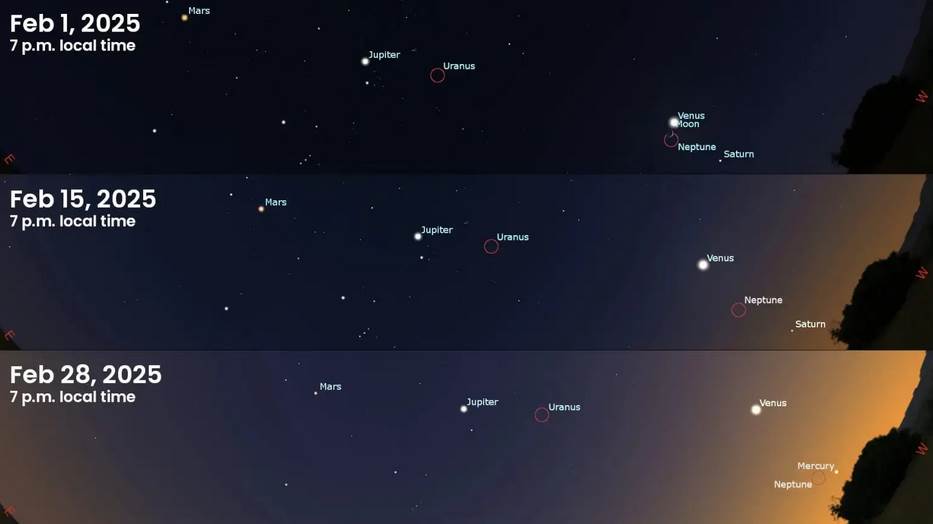
This is apparently the last time that you can see all planets at the same time until the year 2492 (!), says one source. Even if that's not strictly true, it's rare enough and it's in the evening instead of pre-dawn, so that's worth a go.
I'm going to plan on a public get together at the Hort Hill. People can park just below, and a few can park on the road to the water tanks or alongside the road. I'll set up the Celestron 8SE scope which can quickly hop from planet to planet.
Now, the link talks about seeing all 7 planets. I'm saying 8 planets! Yes! Our solar system has 8 planets. The 8th is easy. Just look down at your feet!
The sun sets at 6:01pm, and if the atmosphere is right, we may even see the "Green Ray" as the last bits of the convoluted sun turn emerald green a moment before they disappear. A nice photo opportunity! No promises as it depends on a laminar inversion layer, but it's not uncommon here looking over a cold ocean.
Feb 28: Best moment locally in Aptos looks like 6:40pm. The sun is at -4 degrees, Saturn is at +4 degrees and the other planets are above it in the bright twilight. The 1% crescent moon will be there, and make a spectacular photo subject.
Weather Prospects:
At the moment, Sunday Mar 2 at noon - forecast is for mostly clear skies at 6pm. Could be a bit windy and cool. But the planets Saturn and Neptunre are fast sinking deeper into twilight another degree of angle per day, so this looks to be our last chance to see all planets at one brief sitting.
Here's some images of what it will look like through February.
One View of the Month's Planet Parade... ! |
A good fish-eye lens view of what it may look like - except Uranus and Neptune will be far too faint to see with the naked eye. Mercury will be easy, Saturn will also be faint and difficult but all will be visible in our telescope |
The visual magnitude (v) is shown and the altitude in degrees above the ocean horizon. The sun at -4 will still be fairly obvious twilight... not darkness. I will have a pair of binoculars to help you see the planets in the deep twilight glow, such as Saturn and the moon and Mercury. Super bright is Venus at v= -5. Mercury at V= -1 is also not hard to see even in twilight. Saturn at v = +1 will be harder. Jupiter and Mars at V= -2 will be bright and easy overhead. |
The original plan for Feb 28 Friday night had to reschedule this for Sunday night March 2 due to weather, but the planets were still going to all be possible if we had clear skies to the horizon. We almost did, but Saturn was behind a bank of clouds. We got a short view of Neptune, and the rest of the planets and the moon were all great! We had about a half dozen who braved the risk of clouds and cold and joined us on Hort Hill.
People Pix below (soon!)